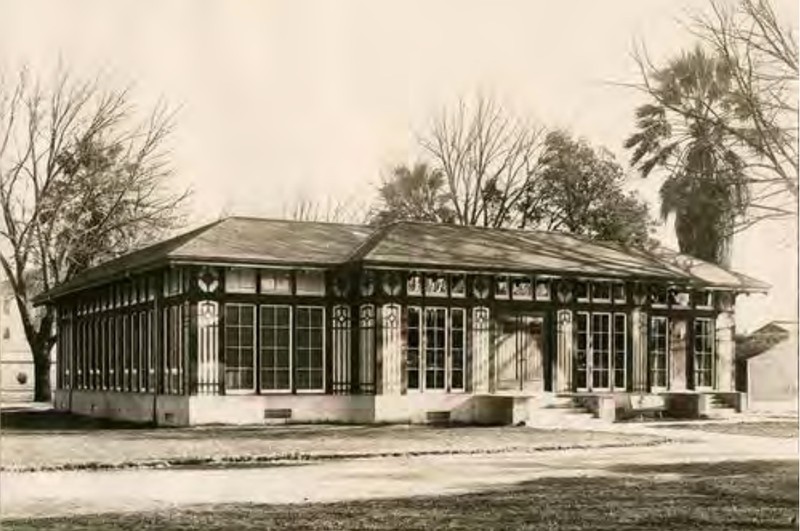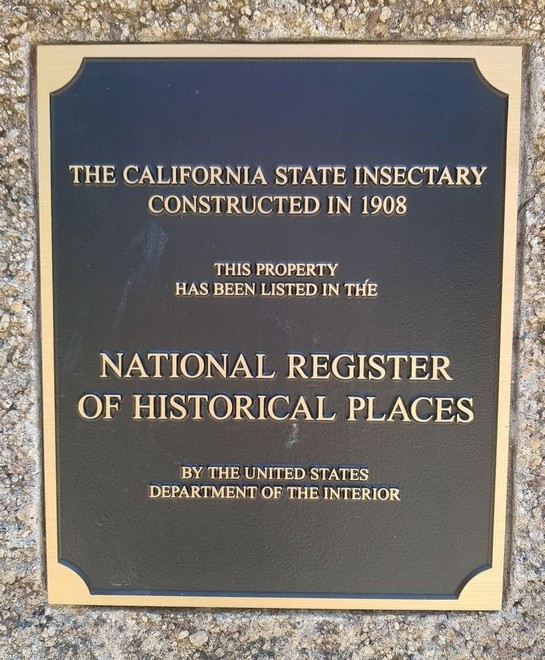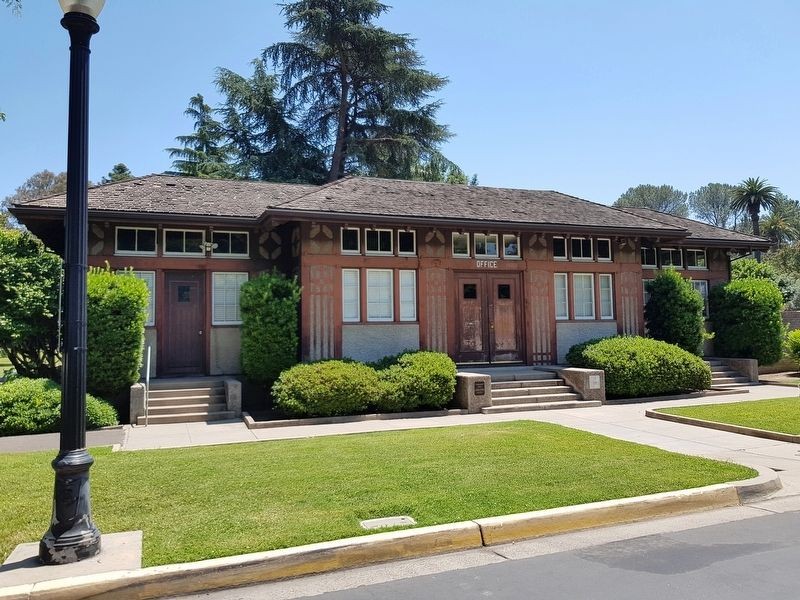California State Insectary Building and Historical Marker
Introduction
Text-to-speech Audio
From 1908 to 1923, the California State Insectary supported the agricultural industry in California by providing farmers with beneficial insects to pollinate their crops. Prior to the widespread use of chemical insecticides such as DDT in the 1930s and 1940s, farmers relied on beneficial insects for crop pollination and as a natural approach to help keep unwanted agricultural pests at bay. The significance of beneficial insects (and other organic methods) is once again recognized today, following numerous documented problems and adverse health effects for people, animals, and ecosystems caused by the widespread use of chemical insecticides in the mid-20th century. The California State Insectary Building was designed in the Arts & Crafts style and is located on the grounds of California State Capitol Park, listed on the National Register of Historic Places in 1973.
Images
California State Insectary in 1908

California State Insectary Historical Marker

California State Insectary Building in 2019

Backstory and Context
Text-to-speech Audio
Located on the grounds of California State Capitol Park in Sacramento, the California State Insectary Building was designed in 1907 by George Sellon, California's first State Architect. Sellon designed the building in the Arts & Crafts style that was popular in the early 20th century, particularly in California. He also designed the Sacramento Hospital Building and the Citizen Hotel, along with other notable buildings throughout the state. In 1909, Sellon founded the architectural design and engineering firm, Lionakis. More than a century later, the company continues oversee the planning, design, engineering, and sustainability of civic, commercial, and corporate projects in Sacramento and beyond.
The California State Insectary was one of the first Insectariums in the U.S. and the world. Known colloquially as California's State "Bug House," the Insectary was built within the capital city of Sacramento after the 1906 earthquake and fire struck the City of San Francisco. From 1908 to 1923, the Insectary's scientists and staff managed the collection, breeding, storage, and distribution of beneficial insects, which are considered important for the pollination of agricultural crops. In addition to pollinating plants, beneficial insects also help to naturally control the spread of unwanted agricultural pests, such as other types of insects that are harmful for fruit and vegetable cultivation.
Beneficial insects were considered essential for farming, prior to the use of chemical insecticides by the state's agricultural industry during the 1930s and 1940s. The widespread use of chemical insecticides, such as DDT, during the post-World War II era was later shown to cause numerous problems and adverse health effects for people, animals, and ecosystems. The negative environmental impacts of these chemical insecticides damaged ecological food chains and living organisms for decades, as exposed by Rachel Carson's 1962 environmental science book, Silent Spring, and by other scientific research. Consequently, the value of organic methods, such as using beneficial insects to naturally control unwanted pests and pollinate crops (methods that pre-dated the use of chemical insecticides) was once again taken seriously.
In the mid-1920s, the beneficial insect collection and breeding program at the California State Insectary was relocated to the Citrus Experiment Station and Graduate School of Subtropical Agriculture at the University of California at Riverside. The original Insectary Building continued to host some programs until 1938, at which time it was converted into a maintenance facility for Capitol Park. The building underwent a restoration to address structural issues, such as replacing rotted wooden beams, while preserving the original Arts & Crafts design. The half-timbered exterior and stucco finish are associated with the Prairie Style championed by Frank Lloyd Wright, blended with Japanese architectural influences. The interior still features a courtyard skylight, atrium, and display cases from the original Entomology Museum located on site.
Sources
"A Lionakis Legacy: The State of California Insectary Building", Lionakis. September 20th, 2021. Accessed June 26th, 2023. https://www.lionakis.com/sellons-legacy-the-state-insectary-building/.
Bruton, J. Makali. "The California State Insectary: Constructed in 1908", Historical Marker Database. August 5th, 2019. Accessed June 26th, 2023. https://www.hmdb.org/m.asp?m=137574.
"California State Insectary", Capitol Commission. January 1st, 2018. Accessed June 26th, 2023. https://capitolcommission.legislature.ca.gov/sites/capitolcommission.legislature.ca.gov/files/state_insectary_habs_survey_school_project.pdf.
Casteneda, Christopher J. and Simpson, Lee M.A., Eds. River City and Valley Life: An Environmental History of the Sacramento Region. Pittsburgh, PA. University of Pittsburgh Press, 2013.
"The Story of Silent Spring", National Resources Defense Council. August 13th, 2015. Accessed June 28th, 2023. https://www.nrdc.org/stories/story-silent-spring.
Capitol Commission
Historical Marker Database
Historical Marker Database
